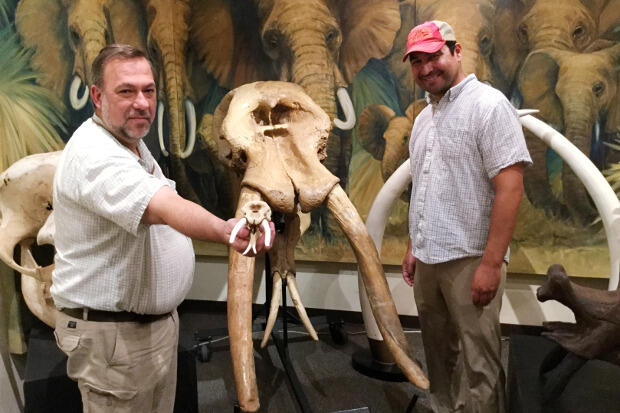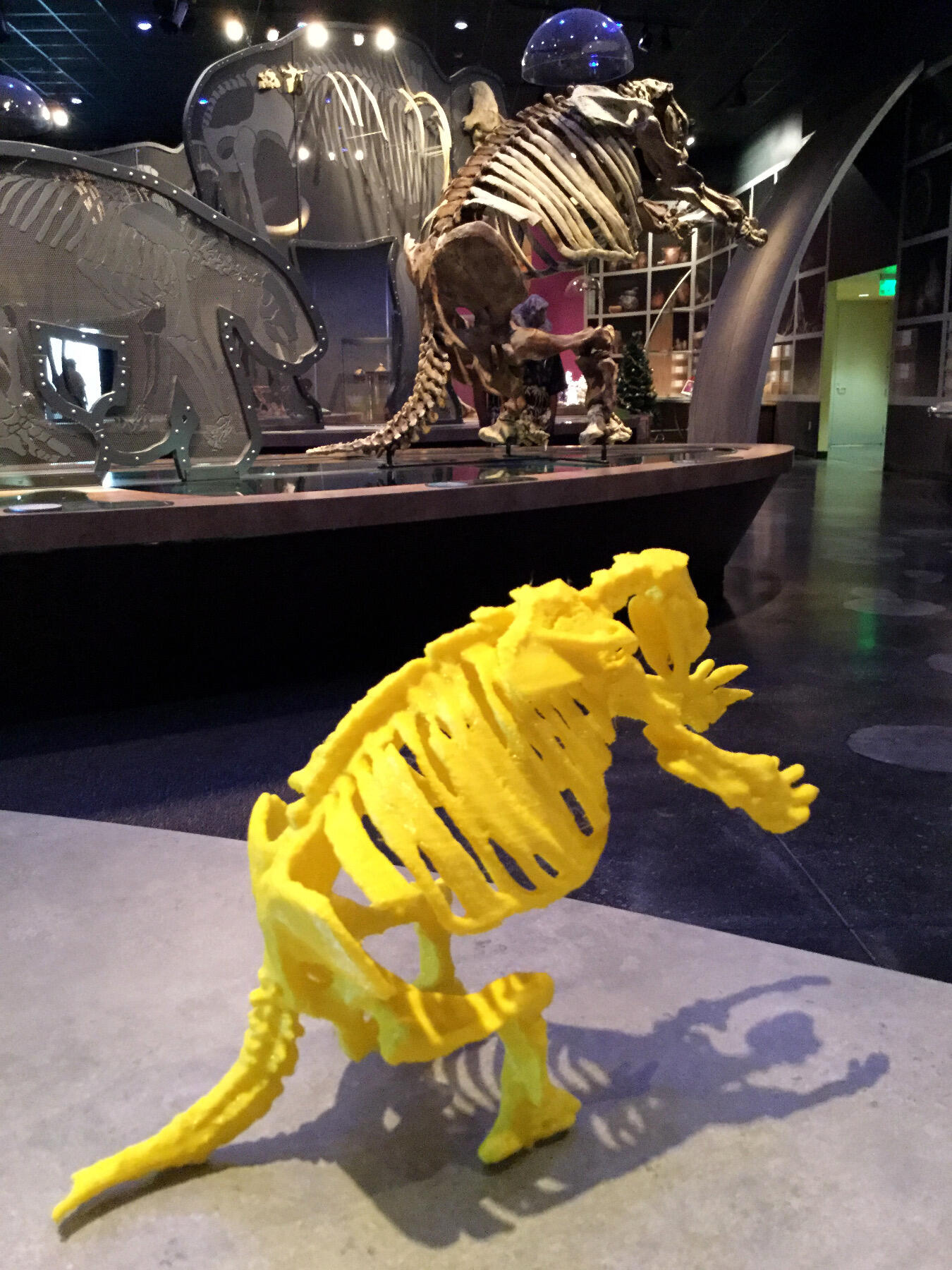
<br>Contributed photos.
Dec. 20, 2017
With help of VCU expert, natural history museums in California and Las Vegas establish 3-D scanning labs
Share this story
A Virginia Commonwealth University faculty member who specializes in the 3-D scanning of historic, paleontological and archaeological objects is helping two museums in California and Las Vegas establish labs that will allow them to 3-D scan fossils in their collection for preservation and to 3-D print replicas.
Bernard Means, Ph.D., a VCU instructor of anthropology and director of the Virtual Curation Laboratory in the School of World Studies in the College of Humanities and Sciences, traveled over the past week to the Western Science Center in Hemet, California, and the Las Vegas Natural History Museum to train museum staff on the finer points of 3-D scanning and printing technology and how to create replicas that could be sold in gift shops or used in hands-on educational programs.
“Both museums are doing the 3-D scanning in part to preserve valuable fossils and make them accessible to researchers,” Means said. “Both museums see 3-D printing as particularly important with scientific outreach and working with school groups which visit the museums in large numbers.”
Joshua W. Bonde, Ph.D., director of conservation and research for the Las Vegas Natural History Museum, said 3-D scanning and printing will allow the museum to generate digital and highly accurate physical replicas of items in its collection.
“This allows someone in Germany to download a dinosaur fossil which we may have dug up in Southern Nevada,” he said. “This helps protect specimens from excessive handling and provides for greater reproducibility of studies.”
Working with Means, he added, has been an “absolute pleasure” and he said VCU’s Virtual Curation Laboratory is a model for digital curation for museums across the country.
“Being trained in archaeology, he doesn't need any hand holding in specimen handling,” Bonde said. “He is very enthusiastic about what he is doing and that enthusiasm is obviously contagious. He has thus far helped us by helping us order the equipment we need. And now he is going to come out to Las Vegas again to train our staff on his techniques of specimen scanning and printing.”
<slideshow id=173 align=center width=620>
Alton C. Dooley Jr., executive director of the Western Science Center, considers the production of 3-D replicas to be an important part of the conservation process, as it allows the museum to carry out research and educational activities with replicas while preserving the original artifact.
“While we already had an active molding and casting program, adding a 3-D printing and scanning capability will greatly enhance our ability to produce replicas,” he said. “We have plans to use printed replicas in our educational kits, to provide to docents for hands-on activities, to provide to researchers to make WSC collections more broadly accessible, and to develop visitor-friendly exhibits.”
Means originally connected with the Western Science Center and the Las Vegas Natural History museum through mutual affiliations with the Smithsonian Affiliates program, which sent Means to the museums to 3-D scan select objects from their collections.
“The quick week of interacting with Bernard [in January] and seeing the power of what he is doing with his scanning setup inspired us to try to recreate, best we can, what Bernard is doing,” Bonde said.

Among the specimens scanned on the trips were various fossils from “Max,” the Western Science Center’s prized 13,500-year-old mastodon.
“Dr. Means is one of the leaders in promoting 3-D scanning and printing of fossils and artifacts,” Dooley said. “His work has been providing a tremendous service in making these items accessible to a broad audience. Dr. Means has been working with WSC for over a year to help us scan fossils in the WSC collections, at first with the direct support of the Smithsonian Affiliates and then as part of the Valley of the Mastodons Symposium.”
In launching 3-D scanning labs, the Western Science Center and the Las Vegas Natural History Museum are taking part in a growing trend across the county.
“More museums are doing this,” Means said, “either by creating their own space, or working with someone like me in the Virtual Curation Lab.”
Subscribe for free to the VCU News email newsletter at http://newsletter.news.vcu.edu/ and receive a selection of stories, videos, photos, news clips and event listings in your inbox every Monday and Thursday during the academic year.
Subscribe to VCU News
Subscribe to VCU News at newsletter.vcu.edu and receive a selection of stories, videos, photos, news clips and event listings in your inbox.













